Exploring the Complexities of WoW: The Burning Crusade


Intro
World of Warcraft: The Burning Crusade marks a significant turning point in the evolution of the popular MMORPG. Launched in January 2007, this first expansion of World of Warcraft introduced a wealth of content, enhancing the gameplay experience for both new and veteran players. It takes adventurers into the shattered realm of Outland, presenting challenges and opportunities unlike any seen in the original game.
The expansion pushed the boundaries of what players had come to expect from online gaming. It added two new races, the Blood Elves and the Draenei, and introduced new classes like the Paladin for the Horde and the Shaman for the Alliance. This diversity not only enriched gameplay but also fostered a more dynamic community, as players experimented with new abilities and strategies.
Overview of World of Warcraft: The Burning Crusade
World of Warcraft: The Burning Crusade expands the rich lore of the Warcraft universe. Set in Outland, a war-torn landscape filled with remnants of the shattered world of Draenor, players encounter familiar locations and new environments. The expansion's narrative weaves through the conflict between the Alliance and Horde, with major characters such as Illidan Stormrage taking center stage. This intricate backdrop provides a foundation for quests and events that connect players with the ever-evolving story.
This expansion also paved the way for significant changes in gameplay mechanics, including the introduction of the flying mount system. This feature transformed exploration and mobility, allowing players to traverse the expansive terrains of Outland with relative ease. Through its updates and modifications, The Burning Crusade reshaped how communities interacted within the game, influencing strategies and cooperation among players.
Plot/Storyline Analysis
The plot of The Burning Crusade intertwines personal stories with broader conflicts within the Warcraft lore. Players embark on a journey through various zones such as Hellfire Peninsula, Zangarmarsh, and Nagrand, each with its own narrative threads. Without giving away spoilers, it is essential to understand that the theme of redemption and the consequences of power resonate throughout these stories.
The overarching narrative encourages players to confront the remnants of their past, showcasing both triumphs and failures of legendary characters. The way quests are structured often leads to surprising revelations, enticing players to dig deeper into the lore.
Character Development
Character arcs in The Burning Crusade reflect the expansion’s thematic depth. Some prominent characters include:
- Illidan Stormrage: A complex figure whose motivations can be interpreted in many ways, Illidan struggles with his legacy and destiny.
- Kael'thas Sunstrider: This prince of the Blood Elves embodies the tension between loyalty and ambition. His decisions significantly affect the narrative.
- Velen: Leading the Draenei, Velen represents hope and resilience, guiding his people through adversity.
These characters, among others, influence player choices and interactions within the community, allowing for a richer gaming experience.
Visuals and Effects
The visual experience in World of Warcraft: The Burning Crusade is distinct. The design of Outland stands as a testament to creative artistry. Environments vary from lush marshlands to barren wastelands, each crafted with vivid details. The art direction successfully conveys the chaotic nature of the world, reinforcing the storytelling.
In terms of graphical enhancements, The Burning Crusade's updates allowed for smoother animations and improved character models. This change provided a more immersive experience, making the landscapes and battles feel alive. The visual storytelling effectively complements gameplay, creating a seamless blend of action and narrative.
In summary, World of Warcraft: The Burning Crusade is not merely an expansion; it is a complex tapestry of gameplay, narrative, and community interaction. From engaging storylines to breathtaking visuals, each element contributes to the overall impact this expansion had on the franchise and its devoted players.
Intro to World of Warcraft: The Burning Crusade
World of Warcraft: The Burning Crusade marks a significant milestone in the expansive lore and gameplay mechanics of the World of Warcraft universe. It serves not only as the first expansion following the original game’s massive success but also as a blueprint for future expansions. This section lays the groundwork for understanding the elements that contributed to its lasting impact. During the exploration of this expansion, readers can expect to gather insights into its innovative contributions to gameplay and community dynamics, as well as its cultural resonance.
Background of the Original Game
The original World of Warcraft launched in 2004, quickly establishing itself as a leader in the MMORPG genre. Players were drawn into the richly crafted world of Azeroth, where they could create their own characters, engage in quests, and interact with others. This interconnectedness was groundbreaking, shaping how online communities would thrive. As more players entered the game, the demand for new content grew. Blizzard Entertainment recognized the need to expand the universe, leading to the creation of The Burning Crusade.
This expansion opened up new realms of gameplay opportunities. With its engaging narrative and innovative systems, it revolutionized how players thought about strategy and play styles. The original game provided a solid foundation, but it was The Burning Crusade that broadened its horizons the most. The gorgeous landscapes, compelling storylines, and the introduction of new races and classes deepened the immersive experience.
Launch and Reception of The Burning Crusade
The Burning Crusade was released on January 16, 2007. Just before its launch, anticipation ran high in the gaming community. Players were eager to explore new continents and discover what additional gameplay elements awaited them. Upon release, it became an instant success, selling millions of copies within the first week. It captivated both new players and veterans alike with its promise of fresh challenges and expansive storytelling.
Critics lauded the expansion for its creativity and innovations. Aspects such as new character races, the introduction of flying mounts, and the challenging dungeons were particularly highlighted. However, it was not without its critiques. Some players felt the new level cap detracted from achieving past milestones, creating a divide in the community. Despite varying opinions, the consensus acknowledged its depth and complexity, which contributed to its narrative richness.
"The Burning Crusade fundamentally altered how players engaged with the game. It set a high bar for future content and made World of Warcraft a phenomenon."
This reception laid the groundwork for subsequent expansions and solidified its place in gaming history. The Burning Crusade altered the game's trajectory, leading to a robust community filled with frenzied excitement and speculation about what would be next.
New Races in The Burning Crusade
The introduction of new races in The Burning Crusade expanded both the narrative and gameplay elements of World of Warcraft. Players were offered distinct cultures, abilities, and histories, which enriched their experience within the game. This expansion shifted the dynamics of the player faction landscape. It was not just about the gameplay mechanics but also about how these races influenced storytelling and player interactions. Understanding the significance of these new races is vital for appreciating the complexity of the expansion as it provided depth to the world of Outland and contributed to the ongoing saga of the WoW lore.
The Draenei: Origins and Significance
The Draenei are a mysterious race that arrived from the shattered world of Argus. Their history is marked by flight and survival against Darkness, specifically the Burning Legion. This narrative is pivotal as it introduces players to complex themes of sacrifice and resilience.
Draenei offer unique characteristics; they have the racial ability to heal themselves and their allies, which makes them valuable in group dynamics. Their presence also serves a narrative purpose, as they are intertwined with the history of the WoW universe, particularly relating to the Burning Legion and the Aldor, which adds layers to player motivations.
Moreover, their architecture and cultural aesthetics provide a fresh perspective, contrasting sharply with the existing races. The Draenei's visual design, influenced by their otherworldly origins, captivates players who find allure in this thoughtful world-building approach.
"The Draenei represent hope and resilience, adding a depth that resonates across the entire lore of World of Warcraft."
The Blood Elves: Cultural Impacts
The Blood Elves emerged as a race of significant cultural depth, having a rich past filled with hardship. Once known as the High Elves, their tragic history with the Scourge has shaped their identity and motivations. This backstory fosters empathy among players and stimulates deeper engagements with the narrative.
With their introduction, Blood Elves brought new gameplay mechanics, including unique class abilities that appealed to mage and hunter players. Their magical prowess sets them apart, contributing to the dynamic nature of PvP and PvE experiences in the expansion. Such distinctive attributes led to increased popularity among players who thrived in exploiting their magical skills.
Culturally, the Blood Elves introduced themes of redemption and the struggle with addiction to magic, which provided rich narrative opportunities. Their divergent path crafted a multifaceted relationship with other races, impacting alliances and rivalries in the game. This complexity not only enhances gameplay but also invites ongoing discourse among players regarding moral choices and consequences.
Gameplay Enhancements
In the landscape of multiplayer online gaming, enhancements can greatly shape player experience. World of Warcraft: The Burning Crusade introduced several vital gameplay advancements that not only augmented game mechanics but also enriched the overall narrative. Among these, the addition of flying mounts and heroic dungeons stand out as significant milestones. These features elevated both accessibility and engagement, offering players new ways to immerse themselves in the ever-expanding universe of Azeroth.
Preface of the Flying Mounts
The introduction of flying mounts marks a pivotal change in player mobility within the game. Prior to this expansion, players navigated the vast terrains of Azeroth primarily on foot or via ground mounts. However, with the arrival of flying mounts like the Abyssal Breeze and Netherwing Drake, players could soar above landscapes, discovering previously unreachable areas and appreciating the intricacies of the world from a new perspective.
This feature not only enhanced gameplay but also allowed for a faster and more efficient questing experience. Players could bypass many ground obstacles that previously slowed progress. The flying mounts served as a significant status symbol, marking progression and dedication to the game, inviting players to invest more time into their characters.
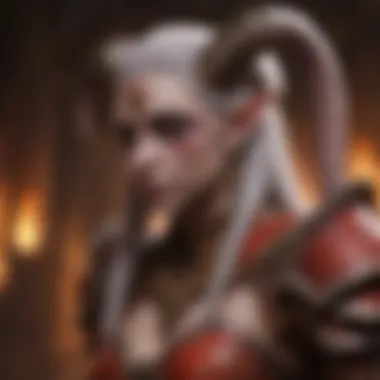
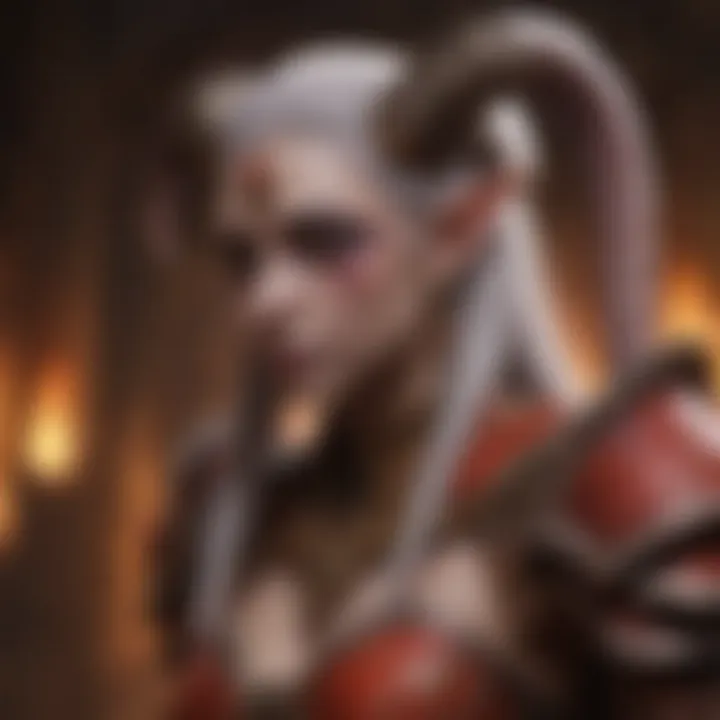
Moreover, while flying creations presented freedom, they also brought challenges. Players had to contend with aerial enemies and navigate through hostile zones that could now be attacked from above. Overall, flying mounts created an environment rich in exploration and confrontation. This nuanced introduction greatly influenced player strategies and how they approached quests and encounters.
Heroic Dungeons: A New Challenge
The addition of heroic dungeons transformed the way players engaged with endgame content. Original dungeons, while challenging, seemed less formidable compared to their heroic counterparts. Players who sought to prove their prowess in The Burning Crusade were introduced to dungeons like The Slave Pens and Shattered Halls, which demanded greater cooperation and strategic thinking.
Heroic mode dungeons featured heightened difficulty levels, introducing more complex mechanics and formidable foes. They required players to think critically and act in unison, fostering a deeper sense of collaboration within guilds and groups. The challenges these dungeons presented encouraged players to refine their skills, gear up optimally, and truly engage with their class roles.
Additionally, the rewards from heroic dungeons justified the increased challenge. Players received superior loot that not only elevated their characters but also contributed to the overall health of the game’s economy. The emphasis on teamwork and strategy in these dungeons cultivated a vibrant community where players shared experiences, strategies, and treasured moments.
"The arrival of heroic dungeons redefined endgame content, encouraging fresh strategies and tighter bonds between players."
In summary, the gameplay enhancements introduced in The Burning Crusade played a crucial role in elevating player engagement and experience. The flying mounts allowed for new forms of exploration while heroic dungeons fostered teamwork and community. Together, these features contributed to the expansion's lasting significance in the realm of World of Warcraft.
New Classes and Their Roles
The introduction of new classes in the expansion of World of Warcraft: The Burning Crusade is a significant milestone. It not only expands the diversity of gameplay but also introduces new strategies and ways to engage with the game world. Players are challenged to explore the unique abilities each class offers, which in turn bolsters the overall experience. The arrival of the Paladin class for the Horde and the Shaman class for the Alliance marks a turning point in the game's design philosophy, fostering a more balanced and intricate environment in both PvE and PvP scenarios.
The Paladin Class for the Horde
The inclusion of the Paladin class within the Horde faction brings a refreshing dynamic to the game. Traditionally, Paladins were exclusive to the Alliance, characterized by their healing abilities and strong melee combat. With the Burning Crusade, the Horde gains access to powerful support capabilities.
This class balances melee damage and magical abilities, granting it versatility in combat. Paladins serve a dual purpose: they can act as formidable tanks, absorbing damage for their party, while also providing essential healing. This flexibility is invaluable for groups, particularly in dungeons and raids where survivability is paramount.
Moreover, the lore behind the Horde Paladins, particularly through the character of Ner'zhul and their ties to the Light, adds depth to their role. Players experience a class that not only excels in mechanics but also has a compelling narrative grounding. The strategic use of Paladins can shift the outcome of encounters, making their integration into raids and group compositions critical. The focus on teamwork and coordination can be enhanced with their powerful cooldown abilities, like Divine Shield and Lay on Hands.
The Shaman Class for the Alliance
Conversely, the Shaman class introduces a unique playstyle for the Alliance side, offering a different approach to combat and healing. Traditionally seen as dual-natured, Shamans wield elemental powers and can adapt to various roles, such as healing, melee fighting, or ranged spellcasting. This variability allows players to switch roles depending on the group composition and encounter requirements.
The Shaman's Totem system serves as a fascinating mechanic. By deploying different totems, a Shaman influences the battlefield through buffs and utility spells. For example, a Healing Stream Totem offers continuous healing, while a Windfury Totem enhances melee damage. This strategic layer compels players to adapt to situational demands, fostering a more engaged gameplay experience.
Additionally, the Shaman class carries rich cultural significance within the Warcraft universe. Connecting to the elemental forces, they embody the spirit of nature and balance. This aspect not only affects gameplay but also enhances the lore, making players feel part of a larger narrative.
"The addition of new classes strengthens the fabric of both factions, inviting players to explore different character interactions and narratives."
By embracing the new class dynamics introduced in The Burning Crusade, players encounter an enriched and multifaceted experience. Each class impacts gameplay, strategy, and the narrative experience in ways that resonate deeply with the game’s established lore and community.
Thematic and Narrative Shifts
The addition of The Burning Crusade to World of Warcraft marks a significant change not just in gameplay, but in the overarching narrative of the universe. This expansion takes players to Outland, a shattered world that is as rich in lore as it is in challenges. Understanding these thematic and narrative shifts is crucial. It allows players to appreciate how the expansion built upon the established storylines from the original game. Moreover, it showcases how Blizzard managed to weave complex narratives into an online multiplayer environment.
The thematic changes introduced in The Burning Crusade can be viewed through various lenses. Players explore new moral conflicts, power struggles, and the balance between good and evil. With new races and profound character developments, this expansion explores themes such as redemption and sacrifice.
The Story of Outland
Outland serves as the primary setting of The Burning Crusade. Once the home of the orcs and draenei, it has transformed into a war-torn landscape filled with remnants of its former glory. The narrative begins with the connection to the lore surrounding the orcs' home world of Draenor, which was destroyed by the Burning Legion. The story emphasizes the struggle of its inhabitants amid the chaos.
This setting not only establishes a visually stunning and diverse environment filled with new terrains and dungeons, but also deeply roots the players in a narrative of survival against insurmountable odds. The player's journey through Outland reflects a larger narrative of the resilience of its inhabitants including the draenei, who seek to reclaim their home from dark forces.
Outland is divided into multiple zones, each rich with quests that contribute to the backdrop of an expanding story. The consequences of past actions echo through its landscapes, affecting both players and non-player characters alike. Each completed quest reveals more about the history and plight of this broken world.
Key Characters and Their Arcs
The Burning Crusade introduces players to a diverse cast of characters, each enriching the narrative through their unique backstories and arcs. The complexity of characters such as Illidan Stormrage, Kael'thas Sunstrider, and Velen shapes the player's experience significantly.
- Illidan Stormrage: Often seen as an anti-hero, Illidan embodies themes of obsession and sacrifice. His tragic quest for power leads to a conflicted legacy, influencing both allies and foes. Players witness his transformation and struggle, feeling the weight of his decisions throughout the narrative.
- Kael'thas Sunstrider: Initially portrayed as a noble leader of the blood elves, his arc explores the temptation of power that leads to ruin. His eventual betrayal shows how desperation can twist noble intentions, making for a poignant narrative.
- Velen: As the leader of the draenei, Velen represents hope and resilience against the darkness. His wisdom and sacrifices are essential in guiding the players through the complexities of their quests. Players can sense the significance of his leadership throughout the battles they face.
These character arcs not only enhance the narrative but also allow players to engage with them on a more personal level. The relationships formed with these characters enrich the gameplay and make the overall quest more immersive.
"The Burning Crusade is a pivotal expansion that set the stage for future storytelling in online gaming, showcasing how deep narratives can coexist with multiplayer gameplay."
Ultimately, the thematic and narrative shifts of The Burning Crusade invite players to reflect on the moral choices and historical events that shape the world of Azeroth. Engaging with characters who have their own struggles provides a richer context for every quest undertaken. The expansion continues to have a lasting impact on how stories are told in the gaming community, setting a high standard for future developments.
Impact on the WoW Community
The release of World of Warcraft: The Burning Crusade marked a significant turning point for the game and its community. This expansion not only introduced new gameplay elements but also reshaped player interactions and the overall culture within the game. Understanding the impact on the WoW community provides insights into how expansions influence player dynamics and foster new forms of collaboration and competition.
Evolving Player Dynamics
With The Burning Crusade, players experienced a shift in how they engaged with each other. The introduction of new races and classes led to a re-examination of group composition for both PvE and PvP activities. Players found themselves adapting their strategies to incorporate the unique abilities of the Draenei and Blood Elves. This evolution came with growing interest in specialization, leading to greater diversity in team roles.
Moreover, challenges in the newly designed instances prompted players to communicate more effectively, establishing a need for strategic planning. Many players began to form bonds over their shared experiences in dungeons and raids.
"The introduction of heroic dungeons challenged seasoned players while welcoming newcomers, fostering a culture of mentorship."
The Growth of Guild Cultures
The Burning Crusade played a pivotal role in the expansion of guild cultures within World of Warcraft. As the content became more challenging, the necessity for cooperative play increased. Guilds emerged as foundational units of support and camaraderie. Players gravitated towards guilds not just for raiding, but also for social interaction and shared goals.
The escalation in competition meant that guilds had to organize more effectively. This led to an emphasis on recruitment and retention strategies to build stronger rosters. Operations such as internal training programs became common as guilds wanted to ensure all members were prepared for high-level encounters. As a result, guild culture evolved into a vibrant social space, where camaraderie could flourish.
- The community saw an influx of diverse guilds, each with its own character and focus:
- Casual guilds focused on enjoyment and friendship.
- Hardcore guilds dedicated to endgame content and leaderboard rankings.
- Roleplaying guilds creating immersive experiences within the game world.
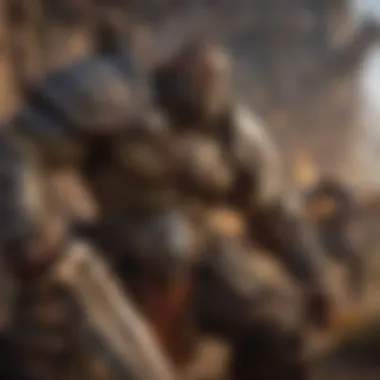
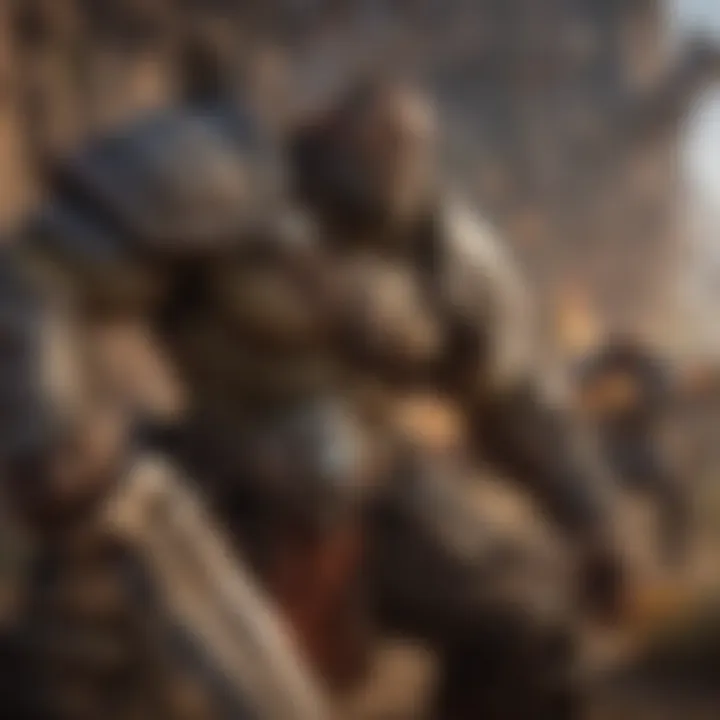
This diversification helped redefine what it meant to be part of the WoW community. Players could find spaces that aligned with their gaming style and social preferences, making the World of Warcraft experience more inclusive than ever.
Through examining these elements, it is clear that The Burning Crusade had a profound and lasting influence on the WoW community, setting the stage for future expansions.
PVP and Competitive Play
Player versus Player (PVP) gameplay is a cornerstone of the World of Warcraft experience. It adds a dynamic layer to player interactions, pushing individuals to develop strategic thinking, teamwork, and quick decision-making skills. The introduction of PVP in The Burning Crusade reshaped how players engaged with one another, making it a critical aspect of the expansion.
The sense of competition fosters rivalry and encourages players to refine their skills. Participating in PVP also offers tangible benefits. Players gain valuable rewards through honor points, allowing for the purchase of powerful gear and enhancing their character's capabilities.
Additionally, PVP creates opportunities for social interaction. Players often form alliances or rivalries, which can lead to larger guilds focusing on competitive play.
Battlegrounds and Their Evolution
Battlegrounds are organized PVP environments where players can team up and battle against opposing factions. In The Burning Crusade, battlegrounds were elevated with the inclusion of new maps and modes. The addition of Eye of the Storm distinguished this expansion from its predecessors.
Eye of the Storm features a unique control point system that emphasizes both combat and strategy. Players must capture and hold specific locations while fighting against the enemy, resulting in intricate tactics. The balance between offensive and defensive strategies is crucial, allowing for evolving gameplay experience.
Today, battlegrounds remain vital within the community. They offer a fast-paced alternative to questing, and many players find joy in the competitive nature of these battles. The well-designed arenas can accommodate a vital PVP culture.
Arena System: Shaping Player Strategy
The arena system introduced in The Burning Crusade represents a significant evolution in competitive play. Unlike traditional battlegrounds, arenas are structured for smaller teams, emphasizing coordination and strategy over sheer numbers. This setting demands that players capitalize on their classes' strengths while compensating for weaknesses.
Different formats offer variety, such as 2v2, 3v3, and 5v5 matches, allowing players to choose the format that best aligns with their group's abilities. The structure fosters a round-based approach, where teams fight in elimination-style matches. The competitive nature of arena play pushes players to assess their character builds critically, honing their techniques to maximize synergy with fellow teammates.
Endgame Content and Raids
Endgame content and raids play a critical role in the gaming experience of World of Warcraft: The Burning Crusade. These elements serve as a culmination of player efforts, offering extensive challenges and rewards that enhance gameplay. The introduction of high-tier content facilitated the community's engagement by fostering teamwork and strategic coordination. Players seek out these experiences for not only the loot but also for the camaraderie that arises from overcoming difficult obstacles as a collective unit.
The complexity of raid mechanics and the demand for precise execution distinguish raids from regular gameplay. These initiatives require preparation, understanding of character classes, and the ability to adapt strategies in response to rapidly changing in-game scenarios. Such challenges ensure that players remain invested, as success often depends on collaboration and communication within guilds.
Moreover, raids are integral to the progression system. They unlock powerful gear and provide exclusive achievements that mark one's accomplishments in the game. Both veterans and newcomers find a sense of purpose in pursuing endgame content, as it continues to evolve and create new narratives within the game.
Iconic Raids: The Eye and Black Temple
The Eye and Black Temple stand as towering achievements in the realm of raids within The Burning Crusade. Each features unique design, narrative depth, and unforgettable encounters that shape a significant portion of the player experience.
The Eye
The Eye is renowned for its striking aesthetic and dynamic encounter design. Nestled within the space of the Tempest Keep, this raid presents a fusion of beauty and battle, making it memorable for players. The multi-phase encounters with bosses such as Al'ar and Void Reaver require precise mechanics, demanding players to be at their best. Each boss not only tests skill but also tells a part of the overarching story, deepening the player's investment in the lore of the expansion.
Black Temple
Black Temple holds a special place in the hearts of many players, as it takes them through the tragic history of Illidan Stormrage. Battling through this iconic raid, players face a variety of enemies that reflect the tumultuous past of Outland. Encountering bosses such as Teron'gor and Illidan himself culminates in an experience that is both exhilarating and challenging. The complexity of these fights requires players to understand their roles thoroughly, as failure during such pivotal encounters can lead to frustration. Yet, the thrill of defeating such mighty foes is quite rewarding.
Challenges and Rewards of Raiding
Engaging with endgame raids comes with its share of challenges and rewards. Players find themselves tasked with mastering difficult mechanics and coordinating strategies with other participants. The necessity for a well-formed raid group means that building relationships and communicating effectively is key.
Some of the main challenges include:
- Strategy Development: Formulating effective combat strategies can be difficult and often requires trial and error.
- Time Investment: Raids demand significant time commitments for preparation and execution.
- Coordination and Management: Players must ensure that roles are filled correctly and all team members are equally invested.
Despite these challenges, the rewards are considerable. Successful raids yield:
- High-Quality Gear: Powerful items that enhance character performance are often the main attraction.
- Achievements: Unique accomplishments tied to specific raids symbolize one's commitment and skill.
- Community Engagement: These raids encourage guild participation and deepen bonds among players.
Raiding in World of Warcraft exemplifies the balance of challenge and reward, fostering growth both individually and collectively.
By understanding the structure and significance of endgame content and raids, players can better appreciate the effort required to reach new heights in the World of Warcraft universe.
Ghastly and Memorable Moments
In the realm of video gaming, moments that evoke strong emotions often become cherished stories shared among players. In the context of World of Warcraft: The Burning Crusade, there exist a plethora of such instances that not only contribute to the nostalgia but also shape the player experience. Recognizing these ghastly and memorable moments is crucial as they illustrate the highs and lows faced within this expansive universe. They connect players, providing opportunities for shared laughter, frustration, and camaraderie, fundamentally shaping community dynamics.
Famous Player Stories
Player experiences often transcend mere gameplay, transforming into stories that resonate deeply within the community. One notable story is that of a player named "Sargeras" who faced an untimely demise during a raid. He had been one of the first players in his guild to reach the pinnacle of gear progression. Tragically, on the night when they attempted to defeat Illidan Stormrage, a miscommunication led to his unfortunate exile from the group just moments before victory was achieved. This incident not only haunted him but also became a legendary tale within the guild, symbolizing the importance of teamwork.
Similarly, another player shared their tale of loss and perseverance when their character, intended for a critical quest, was defeated by an unexpected ambush. The player returned to the same spot, determined to exact revenge on their foes. This experience turned into an epic adventure, culminating in a satisfying victory that reinforced a sense of justice.
These stories resonate with fans because they highlight the depth of emotional investment players tend to make in their characters and adventures. Each retelling cements the bond between participants, embodying the heart of what makes a game like The Burning Crusade unforgettable.
Noteworthy Events in the Expansion
Numerous events throughout The Burning Crusade have left lasting impressions on its player base, often defining the overall experience. One event that stands out is the opening of the Dark Portal. This monumental moment was not just a narrative milestone but a literal gateway into a new world. Players from all factions came together, battling through waves of challenges to reclaim their destiny in Outland. The ambition and dedication showcased during this event reinforced community ties and stirred excitement throughout the player base.
Another remarkable event was the launch of the first Arena tournament. This competitive gaming format breathed new life into Player versus Player interactions. Teams formed rapidly, and rivalries spurred friendships as players sought to optimize their strategies for domination. Many players eagerly recounted their missteps leading to that coveted victory, fostering an environment of learning and growth.
"The arenas changed how we approached combat. It was no longer just about gear; it was about strategy, teamwork, and skill." - An anonymous player reflecting on their Arena experiences.
In essence, the ghastly and memorable moments from The Burning Crusade serve to enrich the narrative landscape of World of Warcraft, highlighting epic tales of personal triumph and loss. These events not only entertain but also create a tapestry of shared experiences that bind the community together, ensuring that the legacy of this expansion is felt long after the gaming session ends.
Economy and Crafting Adjustments

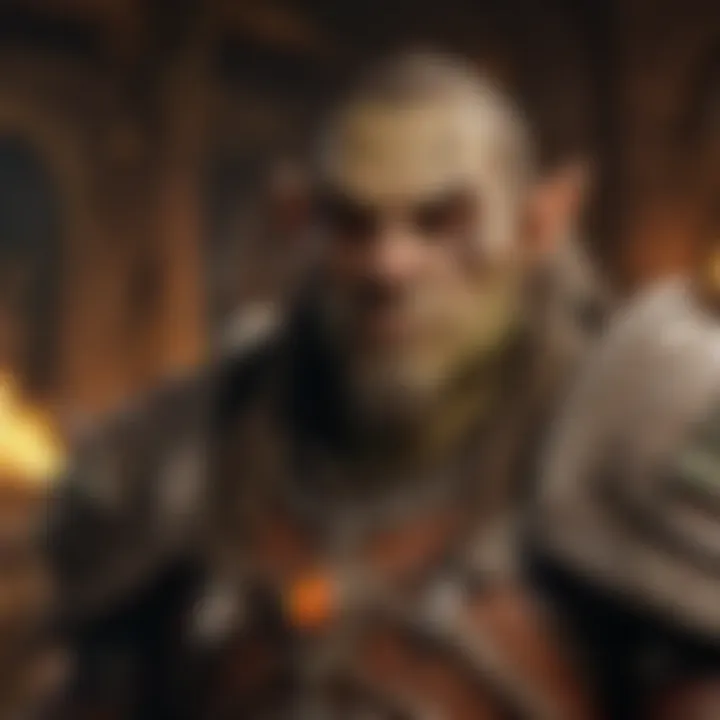
The economy in World of Warcraft: The Burning Crusade underwent significant changes that reshaped the player experience. This expansion introduced deeper crafting systems and market dynamics that encouraged players to engage with the in-game economy more fully. Understanding these aspects is crucial for grasping how they enhance gameplay and community interaction, ultimately contributing to the overall richness of the World of Warcraft universe.
Market Fluctuations on the Auction House
The Auction House in The Burning Crusade provided a new platform for players to trade their goods. Prices for items often fluctuated based on demand and supply. Players learned to keep track of trends to maximize profit. Several factors influenced these fluctuations:
- New Items: As expansions introduced new crafting materials and gear, the market saw shifts in what was valuable. Items like Netherweave Cloth and Fel Iron Ore became staples for crafters.
- Supply and Demand: If an item became popular among players, prices would often skyrocket. Conversely, overproduction might lead to crashing prices, forcing players to adapt their strategies.
- Seasonal Events: Limited-time events also impacted the economy. Special items that could only be acquired during events often became coveted, raising their market value dramatically.
The Auction House not only showcases the economic interactions among players but also cultivates a sense of community as traders negotiate and strategize.
Understanding the Auction House dynamics is essential for any player serious about making gold and improving their characters. It is a microcosm of a real-world economy wherein insights into player behavior are vital for success.
New Crafting Professions Introduced
Crafting in The Burning Crusade expanded with the introduction of new professions. These professions tailored to the unique elements of the expansion greatly contributed to the economy:
- Jewelcrafting: This new profession allowed players to create rings, necklaces, and other accessories, enhancing gear's power through the addition of gems. It quickly became popular among players looking to optimize their characters.
- Enchanting Enhancements: With new materials from higher-level zones, enchanters had more options for improving equipment, which added another layer to the crafting market.
- Elixir Mastery: Alchemists gained the ability to create a larger variety of potions and elixirs, promoting diversity in gameplay strategies during raids and PvP engagements.
The introduction of these professions encouraged collaboration among players. Crafters often needed materials that could only be obtained through gathering, which led to mutually beneficial exchanges. This interdependence among professions strengthens the overall gameplay and enhances the community aspect.
Soundtrack and Audio Design
The significance of soundtrack and audio design in World of Warcraft: The Burning Crusade cannot be understated. The music and sound effects serve as essential components that enhance the player experience, establishing an emotional connection to the game world. This aspect contributes to immersion, helping players to feel invested in their characters and the greater narrative. As players explore the vast landscapes of Outland, the audio score provides context and atmosphere, effectively guiding their emotional responses to various situations.
Compositional Innovations
In The Burning Crusade, composers introduced several innovations that elevated the musical score beyond typical gaming soundtracks. The score combines orchestral elements with traditional high-fantasy motifs, creating a rich auditory experience. Each zone has its own musical theme that reflects its unique culture and environment. For instance, the haunting melodies in Hellfire Peninsula evoke a sense of danger, while the lush harmonies in Nagrand offer tranquility amidst the chaos of war.
"The soundtrack is not just background noise; it tells a story of its own, painting vivid auditory pictures that resonate deeply with players."
The compositions effectively incorporate various instruments, including strings, woodwinds, and brass, imbuing the music with depth and complexity. Such arrangements exemplify the careful attention to detail that is characteristic of Blizzard Entertainment's approach to audio design. The adaptation of themes for boss encounters also heightens tension and excitement during raids and PvP battles, ensuring that players feel the gravity of their adventures.
Impact on Game Atmosphere
The audio design in The Burning Crusade significantly impacts the overall game atmosphere. Sound effects complement visual elements, immersing players in combat, exploration, and interaction. From the ambient noises in forests to the clash of swords in battle, audio elements enrich the gameplay experience. Additionally, the voice acting performed by talented actors adds layers to character interactions and quest narratives, enhancing players' understanding of the story.
The careful production of sound not only aids in player engagement but also allows for a distinct identity for The Burning Crusade. By using music and sound effects to establish emotional beats, the game draws players into its narrative, encouraging longer sessions and deeper connections to in-game events.
The evolution of sound in gaming is evident in The Burning Crusade. It exemplifies how audio contributes to storytelling and immersive gameplay, making it a vital topic of discussion in the world of game design. With innovations in compositional structure and an unwavering focus on atmosphere, this expansion set a standard for future games in the MMORPG genre.
Legacy of The Burning Crusade
The Legacy of The Burning Crusade encompasses the lasting impact and transformative elements this expansion contributed to the broader World of Warcraft universe. This segment analyses several key aspects.
First, The Burning Crusade introduced significant gameplay changes that shaped how players interacted with the world. The addition of flying mounts radically altered navigation, enhancing exploration and strategy in both PvE and PvP engagements. Many players found themselves devising new tactics, as the spatial dynamics of combat and quests adjusted to this new mode of travel.
Additionally, the introduction of two new races, the Draenei and the Blood Elves, had profound implications for racial balance and storytelling within the game. The unique lore and distinct abilities of these factions enriched the narrative, providing players with fresh perspectives and expanding thematic depth.
The open realm of Outland, a pivotal backdrop for this expansion, also left an indelible mark. Outland not only featured diverse zones, each with unique aesthetics and challenges but also served as a canvas for compelling lore surrounding the shattered world.
Key factors in the legacy of this expansion can be summarized as follows:
- Gameplay Mechanics: Enhanced navigation and gameplay strategies due to flying mounts.
- Cultural Diversity: Introduction of new races promoting engagement with lore.
- Narrative Depth: The storytelling possibilities expanded with the inclusion of Outland.
As World of Warcraft continues to evolve, the contributions from The Burning Crusade remain foundational. They exemplify how expansions can revitalize a game environment, encouraging player retention and attracting new audiences.
Influence on Subsequent Expansions
The innovations present in The Burning Crusade set a precedent for future World of Warcraft expansions. Many mechanics introduced during this period became staples in subsequent versions. Flying mounts, initially a novelty, were integrated in later expansions, reshaping the landscape of gameplay entirely.
Furthermore, the model of adding new races and classes became a continued trend. Each new expansion since has sought to find a balance between introducing fresh elements while paying homage to those established in The Burning Crusade. Key points include:
- The introduction of new gameplay modes.
- Continuation of expansive storytelling through character arcs and zones.
- Shift in player dynamics due to race and class introductions.
These influences illustrate the adaptive nature of World of Warcraft, reflecting the importance of past expansions in shaping current game design and player experience.
Cultural Footprint within Gaming
Beyond gameplay mechanics, The Burning Crusade solidified World of Warcraft’s status in gaming culture. The social dynamics within the game flourished during this expansion, transforming the player community into a thriving social ecosystem. The guild system became more robust, with players forming alliances to tackle the challenging content.
Culturally, this expansion introduced events and elements that were discussed extensively on forums, social media, and streaming platforms, such as Reddit and Facebook. Players shared guides, lore explorations, and personal stories, establishing The Burning Crusade as a point of reference in gaming discussions. These activities contributed to a sense of belonging within the playerbase, driving engagement and community growth.
Points of significance include:
- Shared Experiences: Players bonding through raids and guilds.
- Fan Content: The growth of fan art, remixes, and lore discussions.
- Cultural Milestones: Memorable events and challenges becoming part of gaming folklore.
Contemporary Context
The relevance of Contemporary Context in understanding World of Warcraft: The Burning Crusade cannot be overstated. It connects historical significance with the current gaming climate. As we revisit the expansion, it stands as not only a past relic but as a continuing source of insight for game design and community engagement. Contemporary discussions often revolve around the evolution of player behaviors influenced by prior expansions and the ongoing influence of The Burning Crusade.
Retrospective on The Burning Crusade
Many players today are revisiting or discovering The Burning Crusade through re-releases or classic servers. Originally launched in 2007, this expansion fundamentally changed what players expect from MMORPGs. The addition of new races and the intricate nature of Outland's story introduced depth previously unseen.
Players reflect on the expansion's impact on their experience, especially in terms of storytelling and gameplay mechanics. The advent of flying mounts created a sense of freedom, which continues to resonate with player expectations in newer expansions. Players engage in conversation on forums like Reddit to share their nostalgia. They recount how the game shaped their understanding of cooperative play and community dynamics.
Current Player Engagement with the Expansion
Today, The Burning Crusade remains a focal point for many current World of Warcraft players. Engagement with this expansion is remarked through challenges, discussions, and even content creation. Players often stream raids and nostalgic playthroughs on platforms like Twitch and YouTube, revitalizing interest in its content. Social media discussions on sites such as Facebook revolve around the lessons learned from its rich lore and challenging gameplay.
Moreover, the competitive aspect of the Arena system introduced in this expansion continues to influence current PvP strategies. Players analyze footage and share strategies in guild forums.
Ultimately, players use references from The Burning Crusade to explore its legacy while contributing to interactive discussions surrounding its significance even in today's context. With community interfaces open for ongoing dialogue, the expansion remains a vital part of not just the World of Warcraft narrative but also the modern gaming landscape.















